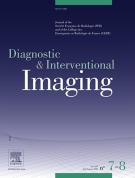Improving pain control during transarterial chemoembolization for hepatocellular carcinoma performed under local anesthesia with multimodal analgesia - 18/11/22

Cet article a été publié dans un numéro de la revue, cliquez ici pour y accéder
Highlights |
• | Adding nefopam and tramadol reduces pain in patients undergoing conventional transarterial chemoembolization for hepatocellular carcinoma. |
• | A reinforced analgesic protocol does not increase the rate of peri and post procedural adverse events. |
• | Existing individual pain risk stratification criteria do not seem relevant for deciding on adding nefopam and tramadol for pain relief in transarterial chemoembolization for hepatocellular carcinoma. |
Abstract |
Purpose |
The purpose of this study was to assess the performance of a reinforced analgesic protocol (RAP) on pain control in patients undergoing conventional trans-arterial chemoembolization (cTACE) for hepatocellular carcinoma (HCC).
Materials and methods |
Eighty-one consecutive patients (57 men, 24 women) with a mean age of 69 ± 10 (standard deviation) years (age range: 49–92 years) underwent 103 cTACEs. Standard antalgic protocol (50 mg hydroxyzine, 10 mg oxycodone, 8 mg ondansetron, and lidocaine for local anesthesia) was prospectively compared to a RAP (standard + 40 mg 2-h infusion nefopam and 50 mg tramadol). The individual pain risk was stratified based on age, the presence of cirrhosis and alcoholic liver disease, and patients were assigned to a low-risk group (standard protocol) or high-risk group (RAP). The primary endpoint was severe periprocedural abdominal pain (SAP), defined as a visual analog scale score ≥30/100. A predefined intermediate analysis was performed to monitor the benefit-risk of the RAP. Based on the intermediate analysis, all patients were treated with the RAP.
Results |
The intermediate analysis performed after 52 cTACE showed that 2/17 (12%) high-risk patients (i.e., those receiving the RAP) experienced SAP compared to 15/35 (43%) low-risk patients (odds ratio [OR] = 0.18; 95% confidence interval [CI]: 0.02–0.98; P = 0.03). Analysis of all procedures showed that 12/67 (18%) patients in cTACE receiving the RAP experienced SAP compared to 15/36 (42%) patients who did not receive it (OR = 3.27; 95% CI: 1.32–8.14; P = 0.01). There were no statistical differences in adverse events, particularly for nausea, between groups.
Conclusion |
Reinforcing the analgesic protocol by combining non-opioid and opioid molecules reduces perioperative pain in patients undergoing cTACE for HCC.
Le texte complet de cet article est disponible en PDF.Keywords : Analgesics opioid, Chemoembolization, Hepatocellular carcinoma, Liver cirrhosis, Non-narcotic analgesics, Pain measurement
Abbreviations : CI, cTACE, HCC, OR, PES, RAP, SAP, SD, TACE, VAS
Plan
Bienvenue sur EM-consulte, la référence des professionnels de santé.
L’accès au texte intégral de cet article nécessite un abonnement.
Déjà abonné à cette revue ?

